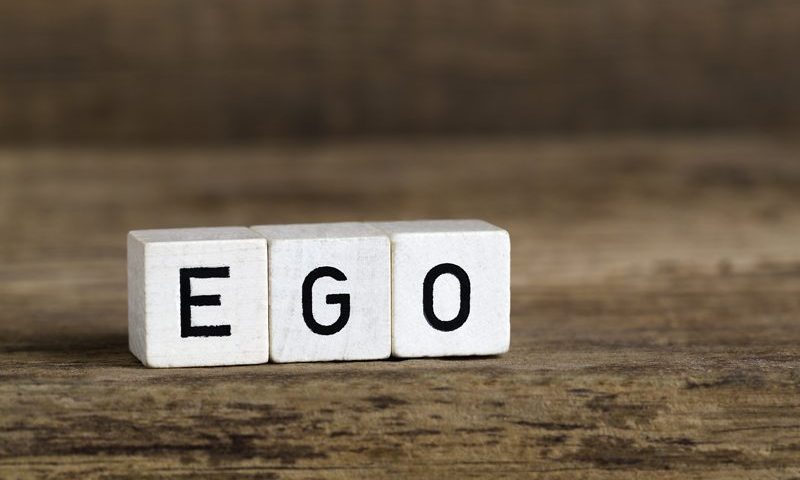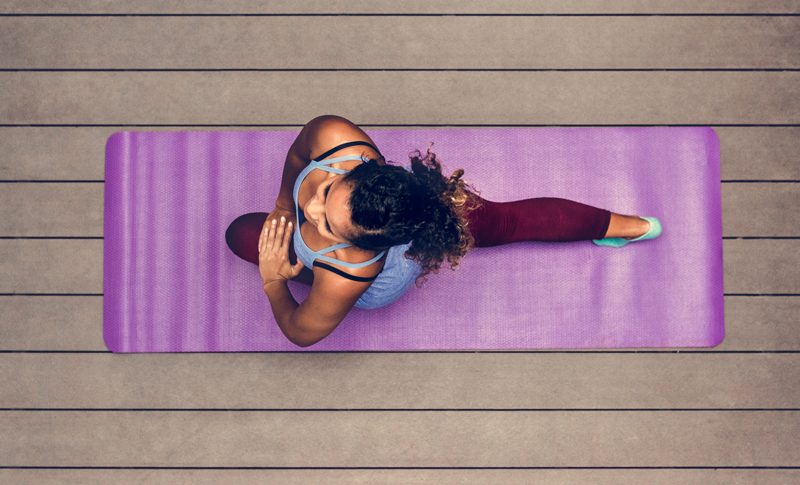
Things to Know Before Yoga Teacher Training
28th March 2019
What’s Nada Yoga?
4th April 2019Yoga and the Ego

When entering a yoga class, we should try to leave our worries, judgements, and egos at the door. In order to live a true yogic lifestyle, you’ll need to leave your ego behind and move into a meaningful and spiritual life ego-free. Unfortunately, this is easier said than done. For many of us, our egos are constant companions that follow us like a shadow. However, with practice and dedication, you can learn to let your ego fade before slipping into your yoga pants. In this article, we explore yoga and the ego in more detail.
What is the Ego?
Before learning how to separate from our ego, it’s important to know what it is. The ego is best described as a positive or negative image of oneself. In most cases, the ego includes both positive and negative aspects. The ego contains our sense of self-confidence, self-worth, and self-esteem and has many desires including prestige, wealth, and success.
If you’re a regular yogi, you may have heard the term egoism, or Asmita, before. Essentially, this denotes an attachment to whatever the ego craves. This attachment is said to prevent Samadhi – the state of bliss and wholeness with the Divine. To achieve inner peace, we must break this attachment and separate ourselves from our ego. Practising yoga is a great way to break free of Asmita. During asana practice, the ego may want to compete with others to be the best in the class. Acting on this desire is egoism. To separate ourselves from our ego, we must refrain from acting upon this desire; instead, we should look inward and focus on the needs of the body.
When we can practice yoga without egoism, we are able to clear the mind and reap the benefits of the traditional practice. From here, the desires of the ego can be observed and assessed without judgement to gain a better understanding of the Self.
How Can We Detach From it?
Remember You are Not Your Ego
The first way to detach from the ego is to remember that the ego does not define us. Although most people know this, it can be easy to forget in the midst of a yoga class – particularly if you’ve got a competitive spirit. Remember that yoga is not about competition; instead, it’s about the inner self. During yoga, allow yourself to be guided into this sense of awareness and accept that you’re more than your ego.
Don’t Judge or Compare
When trying to let go of the ego, try not to judge of compare. Unlike many sports, yoga is not competitive. Refrain from comparing yourself favourably to others, but also avoid judging yourself negatively. You’re there for you and your goal should be to better your own practice. If you want to observe other students, that’s fine – providing that you’re doing so with admiration and compassion.

Don’t Play the Victim
The next point on the list is to not play the victim. Don’t let your ego make excuses for your practice. Adopt the mentality that there are no good or bad days; instead, each day is different. Instead of making excuses for bad practice, show yourself some compassion.
While self-compassion is important, try not to let it turn into wallowing. If you’re experiencing limitations due to injury, modify your practice until you’re fully healed. Instead of wallowing in your limitations, appreciate the postures you can still practice effectively. To detach from the ego, we must acknowledge our strengths and accept our weaknesses.
Embrace the Real You
Letting go of the ego is about embracing the real you. Your ego only grows when it creates an identity for yourself that is separate from the real you. The ‘real you’ is the version of yourself that is universal and not impacted by circumstances. The ego thrives with it reinforces your separate identity by making you feel separate from others due to competition and comparison. Instead of comparing yourself to others, be open to the positive energy of your classmates and instructor. When you do this, you can enjoy the powerful experience of union.
Be Grateful
If we avoid playing the victim, we can sometimes become the martyr, particularly if we are a parent putting the needs of our kids before our own. Yoga can be a great way to fit in some self-care, and practising regularly removes any sense of martyrdom that’s creeping in. Remember that you’re lucky to be able to practice and feel grateful that you have yoga. Also, appreciate the support of your family that allows you to make yoga a part of your life.
Don’t Make Yoga Your Ego Identity
Self-absorbed practitioners turn postures into poses and practice with a sense of superiority. While they may be practicing asana effectively, they aren’t practicing yoga. Practitioners of this sort need to detach themselves from their ego. Yoga is a great way to build self-esteem and having the presence of yoga in your life may give you a sense of belonging. However, it’s important to not make yoga your ego identity. Take time to connect with your universal life and remember the real you. While yoga is an important part of your life, it doesn’t define you. When you’ve let go of your ego, you’ll feel the same about yourself whether you’re on or off the mat.
In Summary
To live a true yogic lifestyle, you must separate yourself from your ego. Learning about yoga and the ego will help you to do this effectively and maintain this mentality both on and off the yoga mat. When you’ve silenced the ego, you’ll be able to greet other yogis with a genuine ‘Namaste’ and enjoy the class with love, respect, and compassion.

